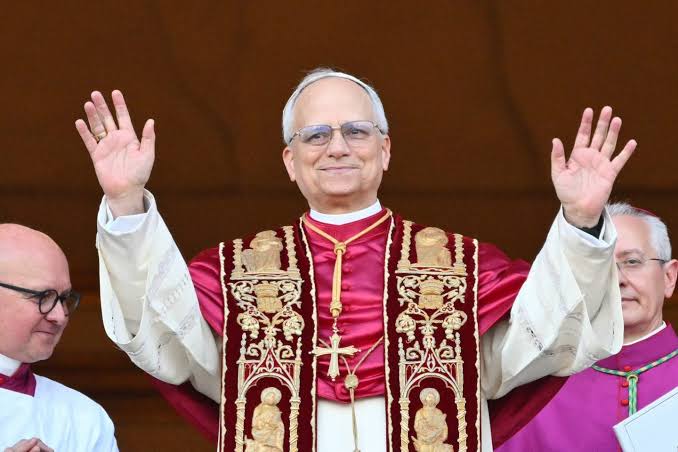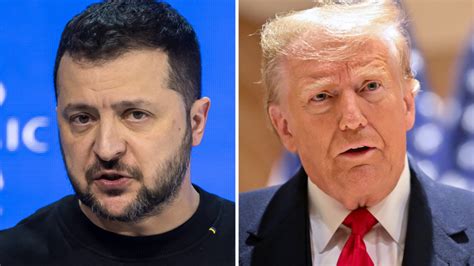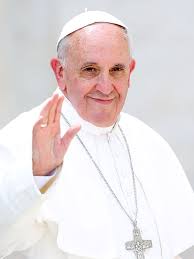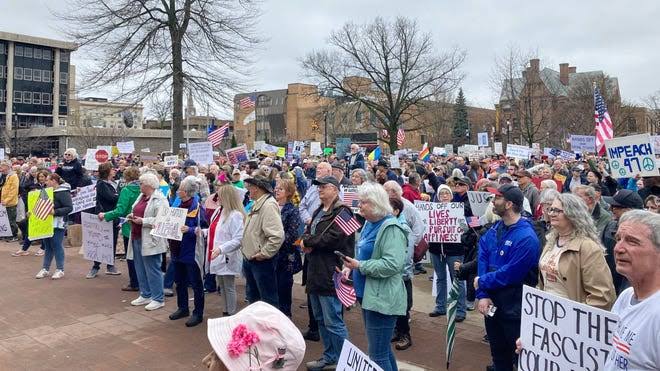Global News
Biography of Pope Leo XIV (Cardinal Robert Francis Prevost)
 On May 8, 2025, white smoke rose from the Sistine Chapel, signaling the election of Cardinal Robert Francis Prevost as the 267th pope, who took the papal name Leo XIV. His election, announced by Card
On May 8, 2025, white smoke rose from the Sistine Chapel, signaling the election of Cardinal Robert Francis Prevost as the 267th pope, who took the papal name Leo XIV. His election, announced by Card
 On May 8, 2025, white smoke rose from the Sistine Chapel, signaling the election of Cardinal Robert Francis Prevost as the 267th pope, who took the papal name Leo XIV. His election, announced by Cardinal Protodeacon Dominique Mamberti, marked a historic moment for the Catholic Church, as Prevost became the first American pope in its history. Below is a detailed biography of Pope Leo XIV, based on available information about his life and career prior to his papacy.
On May 8, 2025, white smoke rose from the Sistine Chapel, signaling the election of Cardinal Robert Francis Prevost as the 267th pope, who took the papal name Leo XIV. His election, announced by Cardinal Protodeacon Dominique Mamberti, marked a historic moment for the Catholic Church, as Prevost became the first American pope in its history. Below is a detailed biography of Pope Leo XIV, based on available information about his life and career prior to his papacy.
Early Life and Background
Robert Francis Prevost was born on September 14, 1955, in Chicago, Illinois, to a family with Italian, French, and Spanish roots. His multicultural heritage shaped his global perspective, which would later define his ecclesiastical career. Growing up in the United States, Prevost was exposed to a diverse society, and his early experiences instilled a deep commitment to service and faith. He pursued higher education with a focus on theology and philosophy, laying the foundation for his religious vocation. His background as an American with ties to multiple cultures made him, as Vatican correspondent Iacopo Scaramuzzi described, “the least American of the Americans,” a quality that resonated with the increasingly globalized College of Cardinals.
Religious Formation and Priesthood
Prevost joined the Augustinian Order, a religious community known for its emphasis on communal life, contemplation, and pastoral service. He was ordained a priest on June 10, 1982, for the Order of St. Augustine (Augustinians). His early ministry was marked by a missionary spirit, particularly in Latin America. Prevost served as a missionary in Peru for several years, working among impoverished communities and gaining firsthand experience of the challenges faced by the Global South. This period was formative, deepening his commitment to social justice and the Church’s mission to serve the marginalized, themes central to the papacy of his predecessor, Pope Francis.
Prevost’s academic pursuits complemented his pastoral work. He earned degrees in theology and canon law, equipping him with the intellectual rigor needed for leadership roles within the Church. His fluency in Spanish, Italian, and English, combined with his pastoral experience, made him a versatile figure capable of bridging cultural and linguistic divides.
Rise in the Church Hierarchy
Prevost’s leadership abilities were recognized early, leading to a series of significant appointments. In 2001, he was elected Prior General of the Augustinian Order, a position he held until 2013. As Prior General, he oversaw the order’s global operations, managing communities in over 40 countries and promoting its mission of education, charity, and evangelization. His tenure was marked by efforts to modernize the order while preserving its spiritual heritage.
In 2014, Pope Francis appointed Prevost as Bishop of Chiclayo, Peru, where he served until 2019. His time in Chiclayo was notable for his focus on pastoral care, community development, and addressing social issues such as poverty and inequality. His work in Peru earned him respect as a bishop who was both approachable and principled, qualities that would later make him a compelling candidate for higher office.
In 2019, Pope Francis called Prevost to Rome, appointing him as an official in the Dicastery for Bishops, the Vatican department responsible for overseeing the selection of bishops worldwide. In 2023, he was named Prefect of the Dicastery for Bishops, a powerful role that placed him at the heart of the Church’s governance. As prefect, Prevost worked closely with Pope Francis to appoint bishops who reflected the late pope’s vision of a more inclusive and pastoral Church. His role gave him broad name recognition among the cardinals, a factor that likely contributed to his election.
Prevost was created a cardinal by Pope Francis on September 30, 2023, during a consistory that emphasized the late pope’s commitment to diversifying the College of Cardinals. At the time of his elevation, Prevost was seen as a rising star, blending progressive social views with a respect for Church doctrine.
Ideological Profile and Papal Candidacy
Cardinal Prevost was considered a centrist within the Church, balancing progressive and conservative elements. He embraced Pope Francis’ emphasis on inclusivity, particularly toward marginalized groups such as migrants and the poor, and was seen as a continuation of the late pope’s social justice legacy. However, he maintained traditional stances on certain doctrinal issues, such as opposing the ordination of women as deacons, which positioned him as a bridge between the Church’s liberal and conservative factions.
His global experience—as a missionary in Peru, a leader of an international religious order, and a Vatican official—made him a strong candidate for a Church seeking a leader capable of navigating geopolitical complexities. Vatican analysts noted that Prevost was among the few cardinals equipped to engage with world leaders like Donald Trump, Xi Jinping, or Vladimir Putin, a necessity in an era of heightened global tensions. His diplomatic prudence and moderate temperament were seen as assets in a polarized Church.
Prevost’s American nationality was both an asset and a potential obstacle. While some cardinals might have been hesitant to elect an American due to the United States’ geopolitical dominance, his extensive international experience and dual citizenship with Peru mitigated these concerns. His selection as pope marked a historic shift, reflecting the growing influence of the Americas in the global Church.
Election as Pope Leo XIV
The conclave of May 2025, which began on May 7, was the largest in history, with 133 cardinal electors. After black smoke on the first day indicated no candidate had secured the required two-thirds majority, white smoke on May 8 confirmed Prevost’s election. His choice of the name Leo XIV is significant, evoking the legacy of Pope Leo XIII (1878–1903), known for his social teachings and efforts to reconcile the Church with the modern world. The name suggests Prevost’s intention to address contemporary challenges while grounding his papacy in tradition.
Challenges and Vision
As Pope Leo XIV, Prevost inherits a Church at a crossroads. He faces the task of continuing Pope Francis’ reforms, including efforts to make the Church more inclusive and transparent, while addressing resistance from conservative factions. Key challenges include:
Clergy Abuse Crisis: Prevost must build on Francis’ efforts to address sexual abuse scandals, ensuring accountability and transparency. His role in the Dicastery for Bishops gives him insight into the selection of leaders who can advance this agenda.
Global Diplomacy: With ongoing conflicts in regions like Ukraine and the Middle East, Leo XIV’s diplomatic skills will be tested. His experience in Latin America and the Vatican equips him to navigate these issues.
Synodality and Reform: Francis’ emphasis on synodality—greater collaboration between clergy and laity—remains a flashpoint. Prevost’s centrist stance may help him mediate between progressive and traditionalist factions.
Geopolitical Tensions: As the first American pope, Leo XIV must manage perceptions of bias in a world wary of U.S. influence. His international background may help him project impartiality.
Personal Traits and Legacy
Pope Leo XIV is described as a pastoral leader with a deep commitment to the poor, a trait shaped by his missionary work in Peru. His multilingualism and global experience make him a pope for a diverse Church. At 69, he is relatively young for a pontiff, suggesting a potentially long papacy that could shape the Church for decades. His humility, intellectual depth, and ability to connect with people across cultures have drawn comparisons to Pope Francis, though his American perspective introduces a new dynamic.
As he steps onto the balcony of St. Peter’s Basilica to deliver his first “Urbi et Orbi” blessing, Pope Leo XIV carries the hopes of 1.4 billion Catholics. His papacy, rooted in a life of service and shaped by a global vision, promises to address the Church’s challenges with a blend of continuity and innovation.
Ukraine and U.S. Sign Historic Minerals Deal to Bolster Reconstruction and Strategic Partnership
 Washington, D.C., May 1, 2025 — In a significant step toward deepening economic ties and supporting Ukraine’s post-war recovery, the United States and Ukraine signed a landmark minerals deal on Apri
Washington, D.C., May 1, 2025 — In a significant step toward deepening economic ties and supporting Ukraine’s post-war recovery, the United States and Ukraine signed a landmark minerals deal on Apri
 Washington, D.C., May 1, 2025 — In a significant step toward deepening economic ties and supporting Ukraine’s post-war recovery, the United States and Ukraine signed a landmark minerals deal on April 30, 2025, after months of intense negotiations. The agreement, signed by U.S. Treasury Secretary Scott Bessent and Ukrainian First Deputy Prime Minister Yulia Svyrydenko, establishes the United States-Ukraine Reconstruction Investment Fund, granting the U.S. preferential access to new Ukrainian mineral deals while funding the country’s reconstruction efforts.
Washington, D.C., May 1, 2025 — In a significant step toward deepening economic ties and supporting Ukraine’s post-war recovery, the United States and Ukraine signed a landmark minerals deal on April 30, 2025, after months of intense negotiations. The agreement, signed by U.S. Treasury Secretary Scott Bessent and Ukrainian First Deputy Prime Minister Yulia Svyrydenko, establishes the United States-Ukraine Reconstruction Investment Fund, granting the U.S. preferential access to new Ukrainian mineral deals while funding the country’s reconstruction efforts.Pope Francis, First Latin American Pontiff, Dies at 88
 VATICAN CITY, April 21, 2025 — Pope Francis, the first Latin American leader of the Roman Catholic Church, passed away on Easter Monday at the age of 88, the Vatican announced. His death, at 7:35 a.m.
VATICAN CITY, April 21, 2025 — Pope Francis, the first Latin American leader of the Roman Catholic Church, passed away on Easter Monday at the age of 88, the Vatican announced. His death, at 7:35 a.m.
 VATICAN CITY, April 21, 2025 — Pope Francis, the first Latin American leader of the Roman Catholic Church, passed away on Easter Monday at the age of 88, the Vatican announced. His death, at 7:35 a.m. local time in his residence at Casa Santa Marta, marks the end of a transformative 12-year papacy that sought to make the Church more inclusive and responsive to global challenges. Cardinal Kevin Farrell, the Vatican camerlengo, announced the news with “deep sorrow,” stating, “His entire life was dedicated to the service of the Lord and His Church. He taught us to live the values of the Gospel with fidelity, courage, and universal love, especially for the poorest and most marginalized.” Born Jorge Mario Bergoglio in Buenos Aires, Argentina, Francis was elected in 2013 as the 266th pope, succeeding Pope Benedict XVI. As the first Jesuit pope and the first from the Southern Hemisphere, he brought a humble, pastoral style that resonated worldwide. Known for shunning the pomp of the papacy, he lived in a modest guesthouse rather than the Apostolic Palace and often spoke out for the poor, migrants, and the environment. His papacy was marked by bold stances on divisive issues. Francis championed inclusivity, famously saying the Church is for “everyone, everyone, everyone,” and took progressive steps, such as supporting greater acceptance of the LGBTQ+ community and criticizing unchecked capitalism and climate change. However, these positions alienated some conservative Catholics, particularly in the United States, where he faced criticism for his critiques of nationalist policies and figures like U.S. President Donald Trump. Despite health challenges, including a 38-day hospitalization for double pneumonia earlier this year, Francis remained active until the end. Just a day before his death, he appeared in St. Peter’s Square for Easter Mass, blessing crowds and meeting U.S. Vice President JD Vance, his final official engagement. His doctors described his recovery from pneumonia as “a miracle,” but his health remained fragile, with recent public appearances requiring a wheelchair and oxygen support. Francis’ death has triggered a wave of global tributes. The White House posted on X, “Rest in Peace, Pope Francis,” alongside photos of his meetings with President Trump and Vice President Vance. Britain’s King Charles III and Queen Camilla expressed being “most deeply saddened,” noting his courageous leadership. Palestinian Christians in Gaza held prayers in his honor, reflecting his consistent advocacy for peace in conflict zones. The Vatican has entered a period of sede vacante (empty seat), with Cardinal Farrell overseeing operations until a new pope is elected. Mourning rites will last nine days, with Francis’ funeral expected in St. Peter’s Square within four to six days. In line with his wishes, he will be buried in a simple wooden casket at St. Mary Major Basilica, not the Vatican, a break from centuries-old tradition. The conclave to choose his successor will follow, with cardinals gathering in Rome to deliberate the Church’s future direction. Francis leaves a complex legacy: a champion of the marginalized whose reforms sparked both hope and division. His death, on the symbolically significant Easter Monday, closes a chapter for the world’s 1.4 billion Catholics and sets the stage for a pivotal transition in the Church’s history. Reporting compiled from Vatican statements, Reuters, AP News, and posts on X.
VATICAN CITY, April 21, 2025 — Pope Francis, the first Latin American leader of the Roman Catholic Church, passed away on Easter Monday at the age of 88, the Vatican announced. His death, at 7:35 a.m. local time in his residence at Casa Santa Marta, marks the end of a transformative 12-year papacy that sought to make the Church more inclusive and responsive to global challenges. Cardinal Kevin Farrell, the Vatican camerlengo, announced the news with “deep sorrow,” stating, “His entire life was dedicated to the service of the Lord and His Church. He taught us to live the values of the Gospel with fidelity, courage, and universal love, especially for the poorest and most marginalized.” Born Jorge Mario Bergoglio in Buenos Aires, Argentina, Francis was elected in 2013 as the 266th pope, succeeding Pope Benedict XVI. As the first Jesuit pope and the first from the Southern Hemisphere, he brought a humble, pastoral style that resonated worldwide. Known for shunning the pomp of the papacy, he lived in a modest guesthouse rather than the Apostolic Palace and often spoke out for the poor, migrants, and the environment. His papacy was marked by bold stances on divisive issues. Francis championed inclusivity, famously saying the Church is for “everyone, everyone, everyone,” and took progressive steps, such as supporting greater acceptance of the LGBTQ+ community and criticizing unchecked capitalism and climate change. However, these positions alienated some conservative Catholics, particularly in the United States, where he faced criticism for his critiques of nationalist policies and figures like U.S. President Donald Trump. Despite health challenges, including a 38-day hospitalization for double pneumonia earlier this year, Francis remained active until the end. Just a day before his death, he appeared in St. Peter’s Square for Easter Mass, blessing crowds and meeting U.S. Vice President JD Vance, his final official engagement. His doctors described his recovery from pneumonia as “a miracle,” but his health remained fragile, with recent public appearances requiring a wheelchair and oxygen support. Francis’ death has triggered a wave of global tributes. The White House posted on X, “Rest in Peace, Pope Francis,” alongside photos of his meetings with President Trump and Vice President Vance. Britain’s King Charles III and Queen Camilla expressed being “most deeply saddened,” noting his courageous leadership. Palestinian Christians in Gaza held prayers in his honor, reflecting his consistent advocacy for peace in conflict zones. The Vatican has entered a period of sede vacante (empty seat), with Cardinal Farrell overseeing operations until a new pope is elected. Mourning rites will last nine days, with Francis’ funeral expected in St. Peter’s Square within four to six days. In line with his wishes, he will be buried in a simple wooden casket at St. Mary Major Basilica, not the Vatican, a break from centuries-old tradition. The conclave to choose his successor will follow, with cardinals gathering in Rome to deliberate the Church’s future direction. Francis leaves a complex legacy: a champion of the marginalized whose reforms sparked both hope and division. His death, on the symbolically significant Easter Monday, closes a chapter for the world’s 1.4 billion Catholics and sets the stage for a pivotal transition in the Church’s history. Reporting compiled from Vatican statements, Reuters, AP News, and posts on X.
Severe Storms, Protests, and Diplomatic Shifts Dominate U.S. Headlines
 Washington, D.C., April 06, 2025 – The United States is grappling with a tumultuous mix of natural disasters, widespread protests, and significant foreign policy developments as the nation navigates
Washington, D.C., April 06, 2025 – The United States is grappling with a tumultuous mix of natural disasters, widespread protests, and significant foreign policy developments as the nation navigates
 Washington, D.C., April 06, 2025 – The United States is grappling with a tumultuous mix of natural disasters, widespread protests, and significant foreign policy developments as the nation navigates a busy start to April.
Washington, D.C., April 06, 2025 – The United States is grappling with a tumultuous mix of natural disasters, widespread protests, and significant foreign policy developments as the nation navigates a busy start to April.

